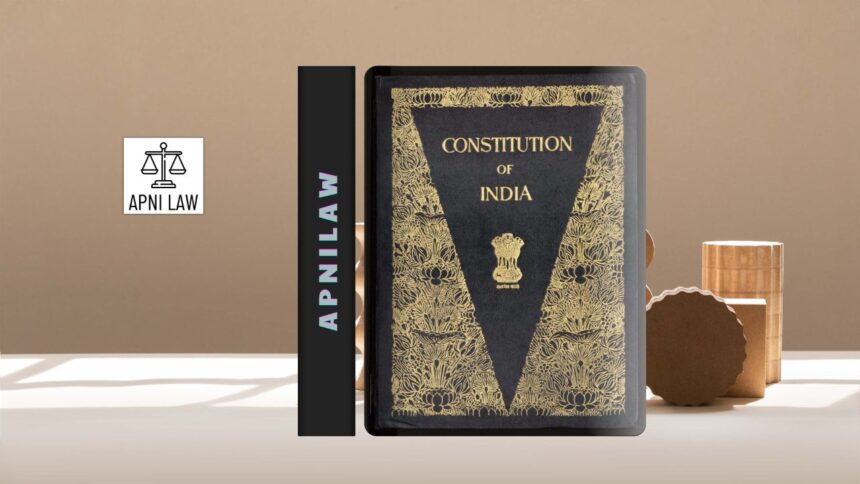India’s parliamentary democracy borrows heavily from the British Westminster model but introduces significant constitutional and federal features that make it distinct. When compared with the American presidential system, India’s model reveals even sharper differences, especially in executive accountability, separation of powers, and party dynamics. Understanding these comparisons highlights how India shaped its governance structure by adapting global practices to its own social and political realities.
How Does India’s Parliamentary System Differ from the UK?
India and the UK both follow the parliamentary form of government, but the principles guiding their systems diverge significantly. The most important distinction lies in constitutional authority. India functions under a written constitution that is supreme. No law can violate the Constitution, and courts hold the power of judicial review. The basic structure doctrine ensures that Parliament cannot amend certain core principles. In contrast, the United Kingdom follows the doctrine of parliamentary sovereignty. Parliament in the UK holds unlimited authority to legislate, and courts cannot strike down its acts. This creates two fundamentally different systems of accountability.
The head of state also differs. India is a republic, so it elects its president. The UK remains a constitutional monarchy, with the king or queen serving as head of state. While both heads of state play largely ceremonial roles, India’s president derives legitimacy from an electoral college, whereas the British monarch inherits authority.
Federalism provides another distinction. India is a federal union where power is shared between the Union and the states. The Constitution clearly distributes legislative authority through Union, State, and Concurrent lists. The UK remains unitary in structure. Scotland, Wales, and Northern Ireland enjoy some devolved powers, but Parliament in Westminster holds the ultimate authority. This makes Indian governance far more complex, as it must accommodate diverse state interests within a single constitutional framework.
The position of the Prime Minister also highlights differences. In the UK, the Prime Minister must belong to the House of Commons. The Indian Prime Minister, however, may come from either the Lok Sabha or the Rajya Sabha. This flexibility often strengthens the role of the upper house in Indian politics.
Judicial authority is another crucial distinction. Indian courts, especially the Supreme Court, can strike down unconstitutional laws. They also protect fundamental rights against executive or legislative encroachment. In the UK, courts cannot nullify an act of Parliament. Their role is limited to interpretation rather than invalidation.
Cabinet formation practices also differ. In the UK, ministers are generally drawn from Parliament. In India, ministers may initially be non-members, but they must secure membership in either house within six months. The UK also practices a unique feature known as the “shadow cabinet.” The opposition forms a parallel cabinet that critiques the ruling government and prepares for potential governance. India does not follow this system, which limits the structured accountability of opposition parties.
Overall, while India took inspiration from the British model, it constitutionalized the framework, added federalism, empowered the judiciary, and ensured elected legitimacy to the head of state. These adaptations reflect India’s need to balance diversity, prevent authoritarianism, and protect fundamental rights.
How Does India’s Parliamentary System Contrast with the USA’s Presidential System?
India’s parliamentary system stands in sharp contrast to the presidential system in the United States. The most striking difference lies in executive accountability. In India, the Prime Minister and the Council of Ministers remain accountable to Parliament. A simple no-confidence motion can remove them from office. This mechanism ensures continuous parliamentary oversight. In the United States, the President serves a fixed term. Congress cannot remove the President except through the extraordinary process of impeachment. This creates executive independence but also reduces day-to-day accountability.
Separation of powers marks another major distinction. The United States maintains a rigid separation between the legislature, executive, and judiciary. The President is directly elected and cannot simultaneously be a member of Congress. India follows a fusion of powers. The Prime Minister and most ministers come from Parliament. This fusion promotes coordination but reduces the checks and balances available in the American system.
Federalism also differs. Both India and the United States are federations, but the distribution of residuary powers sets them apart. In the US, states enjoy residuary authority. Any subject not specifically granted to the federal government automatically belongs to the states. In India, residuary powers rest with Parliament under Article 248. This arrangement strengthens central authority and reflects India’s preference for a strong Union to preserve unity in diversity.
The legislative structures also show differences. India has a bicameral legislature comprising the Lok Sabha and Rajya Sabha. The Lok Sabha represents the people based on population, while the Rajya Sabha represents states but also follows population-based representation. In contrast, the US Congress includes the House of Representatives and the Senate. The House follows population-based representation, but the Senate ensures equal representation for each state, regardless of size. This grants smaller states disproportionate power compared to their population.
The party systems highlight another distinction. India operates under a multiparty system. Regional and national parties share space, and coalition governments often emerge. In contrast, the United States follows a two-party system dominated by Democrats and Republicans. This binary framework ensures stability but limits political diversity. India’s multiparty system fosters inclusivity but often produces instability.
Election of the executive also marks a clear difference. The American President is elected directly by an electoral college representing the people’s choice. In India, citizens elect Parliament, and the majority party or coalition chooses the Prime Minister. Thus, the executive in India depends on parliamentary confidence rather than direct electoral legitimacy.
Cabinet formation also diverges. In India, the Prime Minister selects ministers from both elected members and non-members who later must join Parliament. In the United States, the President appoints cabinet secretaries, often drawn from outside Congress. This allows the US government to include experts and professionals without electoral backgrounds.
Overall, India’s parliamentary democracy promotes accountability and inclusivity, while the American presidential system emphasizes separation, stability, and executive independence.
What Does the Comparative Table Show?
A comparison across India, the UK, and the USA shows a wide spectrum of governance. India and the UK share parliamentary features, but India embeds constitutional supremacy, federalism, and judicial review. The US represents a fundamentally different model that prioritizes separation of powers and fixed executive tenure.
India’s head of state is an elected president, unlike the hereditary monarch in the UK. The US president, though elected, holds far greater executive power than India’s ceremonial president. Federalism also distinguishes them. India and the US are federations, but the UK remains unitary. Yet within the federations, India centralizes residuary powers while the US decentralizes them.
The systems of accountability show the greatest contrast. India and the UK executives depend on parliamentary confidence. The US executive stands independent. Judicial review is extensive in India and the US but limited in the UK. Party dynamics reveal that India accommodates multiple parties, the UK centers on two dominant parties, and the US entrenches a two-party structure.
The Prime Minister’s eligibility varies. In India, the Prime Minister may come from either house, while in the UK, the Prime Minister must belong to the House of Commons. In the US, the concept of a Prime Minister does not exist, as the President embodies both head of state and head of government.
Shadow cabinet practices also underline differences. The UK’s opposition shadow cabinet ensures alternative governance readiness. India lacks this institutionalized opposition structure, and the US presidential system does not follow such a practice either.
Why Is This Comparison Important?
This comparison matters because it reveals how nations adapt governance models to their unique needs. India chose to follow the parliamentary form to ensure accountability, representation, and inclusivity. At the same time, it introduced constitutional supremacy and federal principles to protect democracy from arbitrary majorities and to balance central and state powers.
The United Kingdom demonstrates the resilience of unwritten conventions and parliamentary sovereignty. The United States illustrates the stability of separation of powers and a strong executive. India combines elements of both but adjusts them to accommodate its size, diversity, and historical context.
For any specific query call at +91 – 8569843472
Conclusion
India’s parliamentary system stands midway between the British and American systems. From the UK, it borrowed the Westminster framework but reshaped it under constitutional supremacy, federalism, and judicial review. From the American model, it differed sharply by choosing parliamentary accountability over separation of powers.








